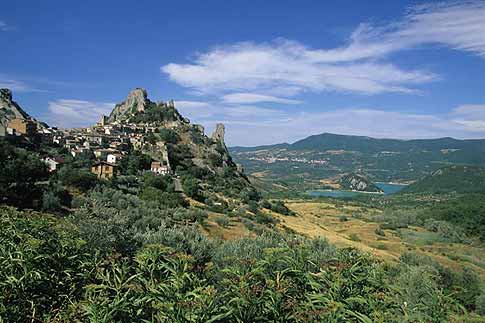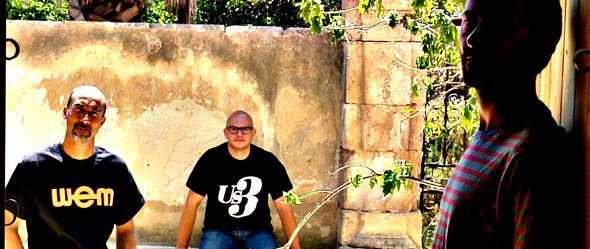Federico Fellini, one of the most influential filmmakers of the 20th century, captivated audiences with his unique and surreal storytelling. Known for his dreamlike imagery, allegorical narratives, and extravagant set designs, Fellini’s films created a surreal world that blurs the boundaries between reality and fantasy.
Before delving into the surreal elements in Fellini’s films, it is important to know who he was and his notable works. was an Italian film director and screenwriter, renowned for his distinctive style and imaginative storytelling. Some of his notable works include “La Dolce Vita,” “8½,” and “Nights of Cabiria,” which earned him critical acclaim and several Academy Awards.
The surreal elements in Fellini’s films are a defining characteristic of his work. His films often create a dreamlike atmosphere through visually stunning and symbolic imagery. Fellini uses symbolism and allegory to convey deeper meanings and explore existential themes. Magical realism and fantasy elements are also prevalent, transporting viewers into a realm where reality and imagination intertwine.
Themes and motifs in Fellini’s films further contribute to the surreal nature of his storytelling. His works often revolve around the search for meaning and identity in a chaotic world. The blurring of reality and fantasy is a recurring motif, challenging the viewer’s perception of what is real and what is imagined. Fellini also offers scathing social critiques, highlighting the absurdities of society and its norms.
Techniques and visual style play a vital role in creating the surreal world of Fellini’s films. Extravagant set designs transport viewers to whimsical and fantastical settings, enhancing the surreal atmosphere. Iconic imagery and symbolism are used to evoke emotions and convey deeper meanings. The use of music and sound adds another layer of immersive storytelling, enhancing the overall cinematic experience.
Fellini’s legacy and influence on filmmaking are immense. His unique style and surreal storytelling techniques have inspired countless filmmakers around the world. Directors such as David Lynch, Terry Gilliam, and Pedro Almodóvar credit Fellini as a major influence on their work, continuing his tradition of pushing the boundaries of cinematic storytelling.
In this article, we will delve deeper into the surreal world of , exploring the dreamlike atmosphere, symbolism, and allegory, as well as examining the themes, visual techniques, and his lasting impact on the world of filmmaking.
Who is Federico Fellini?
Federico Fellini, who is Federico Fellini, was an influential Italian filmmaker known for his surreal and imaginative films. He was born on January 20, 1920, in Rimini, Italy. Fellini’s unique style and storytelling techniques made him one of the most celebrated directors in the history of cinema. Some of his notable works include “La Dolce Vita,” “8 ½,” and “Amarcord.” Fellini’s films often explore themes of dreams, fantasies, and the blurring of reality and illusion. His use of symbolism and allegory adds depth and meaning to his narratives. Federico Fellini’s contribution to filmmaking continues to inspire contemporary directors around the world.
What are some of his notable works?
Federico Fellini is a renowned Italian filmmaker known for his unique and surreal style. What are some of his notable works? Some of his notable works include “La Dolce Vita,” a film that explores the decadence and emptiness of modern society, and “8 ½,” which delves into the creative struggles of a filmmaker. Another notable work is “Nights of Cabiria,” a poignant tale of resilience and hope. Fellini’s films often blur the line between reality and fantasy, utilizing dreamlike atmospheres, symbolism, and allegory. His visually extravagant set designs and iconic imagery have left a lasting impact on filmmaking. If you’re interested in immersing yourself in his surreal world, these films are a great place to start.
The Surreal Elements in Fellini’s Films
Step into the enchanting world of Federico Fellini’s films as we delve into the surreal elements that make them truly extraordinary. Brace yourself for a mesmerizing exploration of dreamlike atmospheres, symbolism, allegory, and the captivating realms of magical realism and fantasy. From the bizarre to the whimsical, each sub-section promises to unravel the layers of Fellini’s artistry, leaving you in awe of his unique vision and storytelling prowess. Prepare to be transported into a realm where reality and imagination seamlessly intertwine.
Exploring the Dreamlike Atmosphere
Exploring the dreamlike atmosphere is a key element in Federico Fellini’s films. Fellini masterfully incorporates surrealism into his works, seamlessly blurring the boundaries between reality and fantasy. Through the meticulous design of sets, the inclusion of symbolic imagery, and the clever use of music and sound, Fellini takes the audience on a mesmerizing journey into a dreamlike state. His films captivate with their bizarre and fantastical scenarios, offering a truly unique and immersive cinematic encounter. A striking example that echoes this ethereal ambiance is the anecdote surrounding Salvador Dali’s unconventional pet anteater. Dali, known for his eccentricities, would leisurely stroll the streets of Paris with his anteater, creating an incredibly surreal spectacle for anyone who happened to pass by.
Symbolism and Allegory
Symbolism and allegory play a crucial role in Federico Fellini’s films, infusing his storytelling with depth and layers of meaning. In works such as “8½” and “La Dolce Vita,” Fellini skillfully employs symbols and allegorical elements to explore existential themes and offer societal critiques. For instance, the recurring image of a captivating circus in “La Strada” serves as a symbol, representing the struggle between freedom and conformity. The surreal and dreamlike quality of Fellini’s films allows for the communication of abstract concepts through visual metaphors and symbolic representations. By utilizing symbolism and allegory, Fellini encourages viewers to interpret his films and establish connections with the universal themes he delves into.
Within a small town, an abandoned clock tower stood as a potent symbol of neglect and forgotten memories. One fateful day, the town council opted to restore the tower, transforming it into a vibrant sculpture symbolizing unity and hope. This revitalized clock tower became an embodiment of symbolism, gently reminding the townspeople of their resilience and the transformative power of collective action. Its allegorical presence instigated a positive change within the community, as individuals united to cultivate a renewed sense of pride and purpose. Today, the clock tower stands tall as a testament to the profound impact of symbolism and allegory in our everyday lives.
Magical Realism and Fantasy
Magical realism and fantasy are prominent elements in Federico Fellini’s films. (Fellini’s Fantasies: Exploring the Surreal World of Federico Fellini) Fellini’s unique storytelling style combines reality with dreamlike elements, creating a wonderful sense of wonder and enchantment. (Magical Realism and Fantasy) In films like “8 ½” and “La Dolce Vita,” Fellini uses magical realism to blur the boundaries between the real world and the realm of imagination. (Magical Realism and Fantasy) These fantastical elements allow for symbolic interpretations and deeper exploration of characters’ emotions and desires. Fellini’s use of fantasy sets him apart as a visionary filmmaker, captivating and inspiring audiences for generations. (Legacy and Influence)
Pro-tip: To appreciate Fellini’s magical realism and fantasy fully, immerse yourself in his rich visual imagery and allow your imagination to roam free.
Themes and Motifs in Fellini’s Films
Fellini’s films take us on a surreal journey, filled with rich themes and motifs. In this section, we’ll delve into the intricate layers of Fellini’s cinematic world, exploring the search for meaning and identity, the captivating blurring of reality and fantasy, and the thought-provoking critique of societal absurdities. Prepare to be immersed in the masterful storytelling and profound symbolism that define Fellini’s extraordinary works. Get ready to unlock the hidden depths of his cinematic tapestry.
The Search for Meaning and Identity
Federico Fellini’s films often revolve around the theme of the search for meaning and identity. Through intricate storylines and character development, Fellini delves into the existential questions that haunt individuals. In movies such as “8 ½” and “La Dolce Vita,” the protagonists navigate personal crises, grappling with their life’s purpose and their sense of self. Fellini’s portrayal of these struggles deeply resonates with audiences, inviting introspection and contemplation. His unique storytelling and visual style further enrich the exploration of these themes, solidifying his reputation as a master filmmaker. The search for meaning and identity in Fellini’s films captivates and challenges viewers, leaving a profound and enduring impact.
The Blurring of Reality and Fantasy
Fellini’s films are renowned for their ability to seamlessly merge reality and fantasy. He adeptly weaves dreamlike elements into the fabric of the real world, resulting in a surreal ambiance. Through this technique, he delves into profound themes and effectively communicates complex emotions. In works such as “8 1/2” and “La Dolce Vita,” Fellini employs symbolism and allegory to challenge viewers’ perception of what is real. By blending the absurd with the mundane, he skillfully critiques society and its inherent contradictions. Fellini’s distinctive visual style, characterized by extravagant set designs and iconic imagery, further heightens the interplay between reality and fantasy. His contributions to the world of filmmaking continue to serve as a source of inspiration for contemporary directors who are also driven to push the boundaries of storytelling.
The Critique of Society and Its Absurdities
Fellini’s films often portray a critique of society and its absurdities. This prevalent theme is evident in many of his works, such as La Dolce Vita and 8½. Fellini effectively incorporates satire and exaggeration to depict the flaws and contradictions of society, thus exposing its superficiality, materialism, and hypocrisy. In his exploration of the human condition, he questions the meaning of life in a society driven by conformity and shallowness. Fellini’s portrayal of the absurdities of society functions as a powerful social commentary, compelling viewers to introspect on their own lives and the world around them. Through his films, he offers a thought-provoking examination of the human experience within the society we inhabit.
Techniques and Visual Style
Get ready to embark on a mesmerizing journey into the surreal world of Federico Fellini. In this section, we will delve into the techniques and visual style that defined Fellini’s films. From his extravagant set designs that transport you to otherworldly realms, to the iconic imagery and symbolism that brims with hidden meanings, and not to forget, the masterful use of music and sound that enhances the emotional impact of his storytelling. Join us as we unravel the magical elements that make Fellini’s movies truly extraordinary.
The Extravagant Set Designs

Stop reading, start speaking
Stop translating in your head and start speaking Italian for real with the only audio course that prompt you to speak.
The extravagant set designs in Federico Fellini’s films are a visual feast, showcasing his unparalleled attention to detail and bringing his imaginative visions to life. These remarkable and elaborate sets create a surreal and fantastical world for his characters to inhabit, captivating the audience’s senses. For instance, in “La Dolce Vita,” the grandeur of Rome is depicted through the use of vibrant colors, unique props, and intricate costumes, enhancing the visual appeal and adding to the dreamlike atmosphere of the film. Similarly, in “8 1/2,” the whimsical circus setting further exemplifies Fellini’s mastery of creating extravagant set designs.
It is fascinating to delve deeper into specific examples of Fellini’s films and their set designs. By exploring the collaboration between Fellini and his production designers, one can gain insight into the intricate process of creating these extraordinary sets. The partnership between Fellini and his production designers is essential in realizing his imaginative visions and bringing the detailed worlds of his films to fruition.
Analyzing the symbolic meaning behind certain elements in Fellini’s set designs offers a deeper understanding of the narratives. Each prop, color choice, and costume is intentionally selected to convey specific themes and emotions. By decoding these symbols, we can unravel the hidden layers of meaning within Fellini’s films, adding another dimension to the viewer’s experience.
Furthermore, it is noteworthy to discuss the lasting influence of Fellini’s extravagant set designs on contemporary filmmakers. His commitment to pushing boundaries and creating visually stunning worlds has inspired countless directors to think outside the box when it comes to their own set designs. Fellini’s legacy can be seen in the work of contemporary filmmakers who strive to infuse their films with the same level of artistry and attention to detail that he brought to his extravagant sets.
The Iconic Imagery and Symbolism
Federico Fellini’s films are renowned for their iconic imagery and symbolism. He skillfully used visual elements to convey deeper meaning and create a surreal atmosphere. The Iconic Imagery and Symbolism are evident throughout his work. Some notable examples include the use of mirrors to explore identity in “8 1/2” and the image of a giant ocean liner to represent society in “La Dolce Vita”. Fellini’s symbolic approach allowed him to delve into the subconscious and challenge conventional storytelling. The recurring motifs and striking visuals, which showcase The Iconic Imagery and Symbolism, in his films have had a lasting impact on the world of cinema. Pro-tip: Pay attention to the visual details in Fellini’s films to fully appreciate the depth of his storytelling.
The Use of Music and Sound
The Use of Music and Sound is a significant aspect in Federico Fellini’s films, serving as an essential component of his unique storytelling style. Here are a few key elements to consider:
- Soundtrack selection: Fellini meticulously selects music that complements and enhances the mood and emotions portrayed in his films. He incorporates a wide range of musical styles, from classical compositions to popular songs, to create a captivating auditory experience.
- Sound design: The sound effects in Fellini’s films are intricately crafted, aiming to immerse viewers into the surreal and dreamlike worlds he creates. This attention to detail amplifies the overall audio experience and contributes to the film’s atmosphere.
- Collaborations with composers: Fellini frequently collaborates with renowned composers such as Nino Rota, resulting in iconic and unforgettable scores that are deeply intertwined with his films. These collaborations bring out the best in both the music and the visuals, elevating the overall artistic impact.
The combination of The Use of Music and Sound in Fellini’s films creates a mesmerizing audio experience for the audience, amplifying the visual and narrative aspects of his works.
For further exploration of filmmakers who excel in utilizing music and sound in their work, consider exploring the works of Stanley Kubrick, Quentin Tarantino, and Wes Anderson.
Legacy and Influence
Federico Fellini’s surreal visions have left an indelible mark on the world of cinema. Dive into the intriguing section of “Legacy and Influence” as we unravel the extraordinary impact that Fellini has had on the art of filmmaking. From revolutionizing storytelling techniques to captivating visuals, we’ll explore how Fellini’s genius has inspired a new generation of contemporary filmmakers. Prepare to be amazed by the lasting legacy and enduring influence of this visionary maestro.
Fellini’s Impact on Filmmaking
Fellini’s Impact on Filmmaking had a profound effect on the world of cinema, influencing future generations of directors and shaping the industry. Federico Fellini’s innovative techniques and storytelling methods continue to inspire contemporary filmmakers. His use of surreal elements, such as symbolism, allegory, and fantasy, pushed boundaries and expanded the possibilities of storytelling in cinema. Fellini’s exploration of themes like the search for meaning and identity, the blurring of reality and fantasy, and the critique of societal absurdities added depth and complexity to his films. Furthermore, Fellini’s extravagant set designs, iconic imagery, and masterful use of music and sound further enhanced the visual and auditory experience, solidifying his significant impact on the art of filmmaking.
Contemporary Filmmakers Inspired by Fellini
Contemporary Filmmakers Inspired by Fellini
Contemporary filmmakers have drawn inspiration from the surreal world of Federico Fellini. Here are some notable filmmakers who have been influenced by Fellini’s unique style and storytelling techniques:
| Quentin Tarantino | Guillermo del Toro | Wes Anderson | Alejandro Jodorowsky | Yorgos Lanthimos |
|---|---|---|---|---|
| Known for his unconventional narratives, Tarantino has cited Fellini as one of his major inspirations. | Del Toro’s visually stunning and fantastical films show the influence of Fellini’s magical realism and use of symbolism. | Anderson’s whimsical and meticulously crafted films exhibit traces of Fellini’s iconic imagery and attention to detail. | Jodorowsky’s surreal and metaphorical films reflect the influence of Fellini’s dreamlike atmosphere and allegorical storytelling. | Lanthimos, known for his darkly humorous and unconventional narratives, shares Fellini’s exploration of the absurdities of society. |
These filmmakers have incorporated Fellini’s distinct style into their own works, contributing to the ongoing legacy of Fellini in contemporary cinema.
Frequently Asked Questions
1. What are some key themes in Federico Fellini’s films?
Federico Fellini’s films often explore surreal elements, blurring the line between reality and imagination. Memories, dreams, and present reality hold equal importance, with memories shaping the characters’ perspectives. Fellini’s films portray memories as exaggerated and larger-than-life episodes, seen through the subjective lens of youth. These memories are not accurate representations of the past but rather fantastic interpretations.
2. How do memories play a role in Fellini’s films?
Memories in Fellini’s films define the characters’ true identities. Fellini captures the feeling of memories in a unique way, showcasing the difference between a youthful perspective and an aged one. His films create surreal and fictional daydreams and fantasies that coexist with the memories. Memories are often linked to Fellini’s own subconscious fears and desires.
3. What is the significance of surrealism in Fellini’s work?
Fellini’s films, especially “8½” and “Juliet of the Spirits,” embrace surrealism. His use of bizarre juxtapositions, fantastical elements, and ambiguous non-sequiturs adds depth and complexity to his storytelling. Fellini’s surrealism allows him to explore psychological projections, subconscious fears, and desires, creating a dreamlike atmosphere in his films.
4. What is the influence of childhood experiences in Fellini’s films?
Guido Anselmi’s desires in “8½” are connected to his childhood, illustrating the Freudian theory that childhood experiences shape personalities. Fellini’s movies often showcase memories from the characters’ childhood, emphasizing their impact on shaping their perspectives and true identities. Childhood experiences act as a driving force behind the characters’ actions and motivations.
5. How are memories portrayed in Fellini’s films?
Fellini’s films portray memories as exaggerated and larger-than-life episodes, seen through the subjective lens of youth. Memories in his films are not accurate representations of the past but rather fantastic interpretations. Fellini creates a surreal and dreamlike portrayal of memory, showcasing the difference between a youthful perspective and an aged one.
6. What are some highly regarded films by Federico Fellini?
Federico Fellini has directed many highly acclaimed films throughout his career. Some notable films include “8½,” “La Dolce Vita,” “La Strada,” “Juliet of the Spirits,” and “Amarcord.” These films are known for their surreal and dreamlike portrayal of memory, their exploration of subconscious fears and desires, and their unique storytelling style.
{
“@context”: “https://schema.org/”,
“@type”: “FAQPage”,
“mainEntity”: [
{
“@type”: “Question”,
“name”: “What are some key themes in Federico Fellini’s films?”,
“acceptedAnswer”: {
“@type”: “Answer”,
“text”: “Federico Fellini’s films often explore surreal elements, blurring the line between reality and imagination. Memories, dreams, and present reality hold equal importance, with memories shaping the characters’ perspectives. Fellini’s films portray memories as exaggerated and larger-than-life episodes, seen through the subjective lens of youth. These memories are not accurate representations of the past but rather fantastic interpretations.”
}
},
{
“@type”: “Question”,
“name”: “How do memories play a role in Fellini’s films?”,
“acceptedAnswer”: {
“@type”: “Answer”,
“text”: “Memories in Fellini’s films define the characters’ true identities. Fellini captures the feeling of memories in a unique way, showcasing the difference between a youthful perspective and an aged one. His films create surreal and fictional daydreams and fantasies that coexist with the memories. Memories are often linked to Fellini’s own subconscious fears and desires.”
}
},
{
“@type”: “Question”,
“name”: “What is the significance of surrealism in Fellini’s work?”,
“acceptedAnswer”: {
“@type”: “Answer”,
“text”: “Fellini’s films, especially ‘8½’ and ‘Juliet of the Spirits,’ embrace surrealism. His use of bizarre juxtapositions, fantastical elements, and ambiguous non-sequiturs adds depth and complexity to his storytelling. Fellini’s surrealism allows him to explore psychological projections, subconscious fears, and desires, creating a dreamlike atmosphere in his films.”
}
},
{
“@type”: “Question”,
“name”: “What is the influence of childhood experiences in Fellini’s films?”,
“acceptedAnswer”: {
“@type”: “Answer”,
“text”: “Guido Anselmi’s desires in ‘8½’ are connected to his childhood, illustrating the Freudian theory that childhood experiences shape personalities. Fellini’s movies often showcase memories from the characters’ childhood, emphasizing their impact on shaping their perspectives and true identities. Childhood experiences act as a driving force behind the characters’ actions and motivations.”
}
},
{
“@type”: “Question”,
“name”: “How are memories portrayed in Fellini’s films?”,
“acceptedAnswer”: {
“@type”: “Answer”,
“text”: “Fellini’s films portray memories as exaggerated and larger-than-life episodes, seen through the subjective lens of youth. Memories in his films are not accurate representations of the past but rather fantastic interpretations. Fellini creates a surreal and dreamlike portrayal of memory, showcasing the difference between a youthful perspective and an aged one.”
}
},
{
“@type”: “Question”,
“name”: “What are some highly regarded films by Federico Fellini?”,
“acceptedAnswer”: {
“@type”: “Answer”,
“text”: “Federico Fellini has directed many highly acclaimed films throughout his career. Some notable films include ‘8½,’ ‘La Dolce Vita,’ ‘La Strada,’ ‘Juliet of the Spirits,’ and ‘Amarcord.’ These films are known for their surreal and dreamlike portrayal of memory, their exploration of subconscious fears and desires, and their unique storytelling style.”
}
}
]
}





